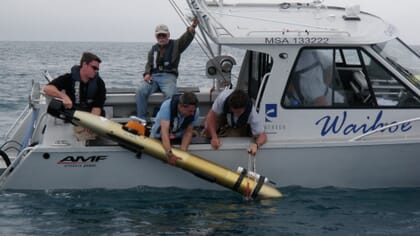The two-year project is being led by Dr Chris Cornelisen, Coastal and Freshwater Group Manager at the Cawthron Institute, who is looking forward to bringing together a multi-disciplinary science team.

"The Precision Farming for Aquaculture project will combine cutting-edge research in sensing technologies, lasers, and artificial intelligence with practical, applied research to provide solutions to the aquaculture industry," said Dr Cornelisen.
Research into efficient and cost-effective underwater communications also aims to unlock the future potential of untethered sensors, drones and robotics.
There are unique challenges to farming in the ocean. Farms must be physically accessed by boat, with stock health and condition manually recorded. High costs and delicate equipment are barriers to implementing new technology; this project will innovate to reduce these obstacles.
"We’ll be developing new chemical sensors that can identify the amount of food and nutrients in the water, and imaging sensors that use artificial intelligence to let farmers ‘see’ their farm and stock condition in real time from a computer or mobile device,” he continued. "The aquaculture industry aims to reach $1 billion in sales by 2025. Technology that promotes sustainability, efficiency, and the ability to farm further offshore will play a significant role in achieving this target."
Part of the National Science Challenges, the project is funded by the Science for Technological Innovation (SfTI) National Science Challenge Board.
The project brings together a collaborative team of researchers from Cawthron Institute, University of Auckland, Victoria University of Wellington, University of Canterbury, and the NZ Product Accelerator. Meanwhile, an Industry Advisory Group will provide an additional contribution.
The long-term vision is to establish New Zealand as a leader in hi-tech, aquaculture automation and remote farm intelligence. The innovations unlocked through the project are likely to have applications beyond aquaculture; for example they may aid biosecurity and environmental surveillance in ports and harbours.


